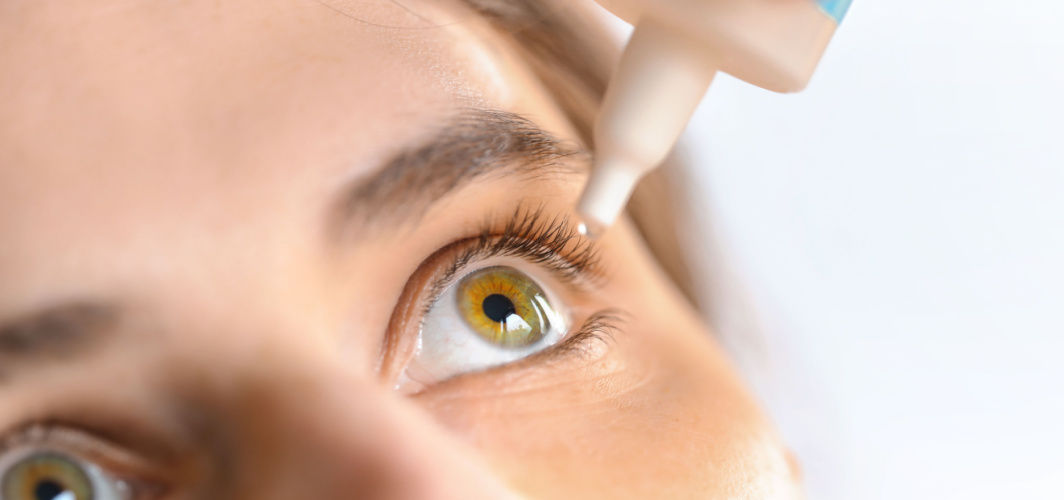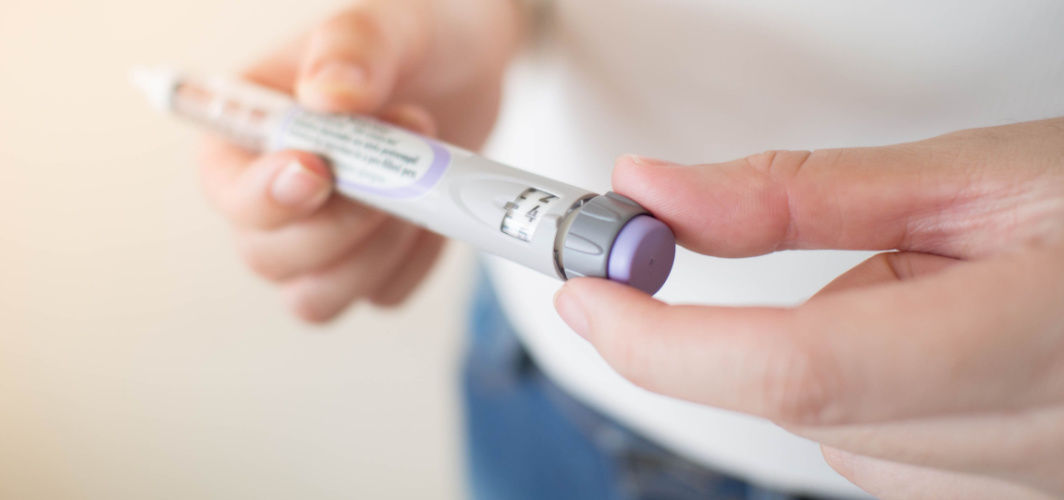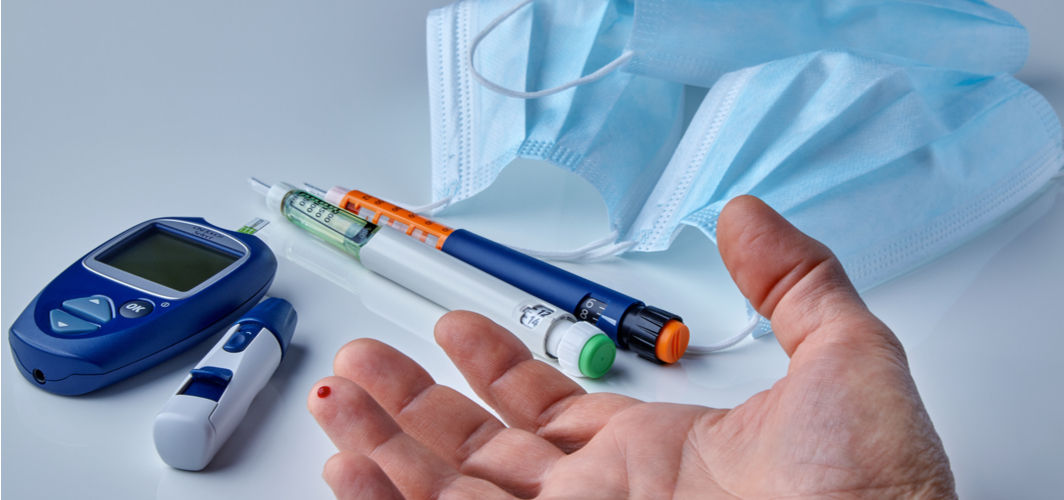Diabetes Management
How Can Sleep Apnea Affect Diabetes?
6 min read
By Apollo 24|7, Published on - 05 July 2023
Share this article
0
0 like

We often consider snoring a loud, harmless noise that may be heard when your chest is congested. However, snoring accompanied by daily fatigue, or frequent awakenings at night, could indicate a serious medical condition called sleep apnea. Sleep apnea disrupts your breathing during sleep, resulting in more carbon dioxide molecules in your blood. This can make it harder for insulin to work, causing a spike in your blood sugar levels, and increasing the risk of diabetes. Read this article to learn more about how sleep apnea and diabetes are connected.
Impact of Sleep Apnea on Diabetes
The relationship between the two conditions is bi-directional, which means while sleep apnea increases the chances of developing diabetes, having diabetes can worsen the severity of sleep apnea. The specific impacts of sleep apnea on diabetes include:
1. Sleep apnea and increased risk of type 2 diabetes
Sleep apnea may cause insulin resistance, higher blood sugar levels, and difficulties in processing glucose. These factors increase the odds of developing type 2 diabetes.
2. Aggravation of diabetes complications
Sleep apnea can worsen existing complications related to diabetes, such as cardiovascular disease, neuropathy (nerve damage), and retinopathy (damage to the retina). Poor sleep quality, lack of oxygen during sleep, and increased inflammation also contribute to the worsening of these complications.
3. Sleep apnea and gestational diabetes risk
Sleep apnea is associated with a higher risk of gestational diabetes in pregnant women. Recognising this link is important for identifying and addressing potential diabetes-related health concerns during pregnancy.
Risk Factors for Sleep Apnea
Several factors can increase the likelihood of developing the condition. These risk factors include:
1. Obesity
Excess weight, particularly around the neck area, increases the risk of airway obstruction during sleep, leading to sleep apnea.
2. Advanced age
Sleep apnea becomes more prevalent as individuals get older.
3. Family history
Having a family history of sleep apnea increases the chances of developing the disorder.
4. Anatomical factors
Certain physical characteristics, such as a narrow airway, enlarged tonsils, or a deviated septum, can contribute to the development of sleep apnea.
5. Gender
Men are more susceptible to sleep apnea compared to women.
Sleep Apnea Symptoms and Diabetes Risk
Knowing about sleep apnea symptoms is crucial for early detection and intervention. These symptoms can also increase your risk of diabetes risk, hence testing is crucial.
Common symptoms of sleep apnea include:
- Loud and chronic snoring
- Gasping or choking sensations during sleep
- Frequent awakenings with a feeling of breathlessness
- Excessive daytime sleepiness and fatigue
- Morning headaches
- Dry mouth or sore throat upon waking
- Difficulty concentrating and irritability
- Decreased libido and sexual dysfunction
Obstructive Sleep Apnea and Diabetes Risk
People with obstructive sleep apnea (OSA) experience disrupted breathing while they’re asleep, due to partial or complete blockage of the upper airway. This disruption can make it difficult for your body to use insulin properly, leading to high blood sugar levels and eventually causing type 2 diabetes.
Moreover, OSA also promotes insulin resistance and restricts the proper utilisation of glucose. It can also cause inflammation throughout your body, which can further increase the risk of developing diabetes.
Sleep Apnea Diagnosis and Diabetes Risk
To find out if you have sleep apnea, doctors use different methods. Two common ones are:
- Polysomnography: This test is done in a special sleep clinic. While you sleep, it measures your brain activity, eye movement, heart rate, how you breathe, and how much oxygen is in your blood.
- Home sleep apnea tests: You can do this test at home using a portable device. It keeps track of your breathing patterns, oxygen levels, and other important information.
Sleep Apnea Treatment and Diabetes
There are different ways to treat sleep apnea, especially for people with diabetes. Here are some options:
1. Continuous Positive Airway Pressure (CPAP) therapy:
In this therapy, the patient is given a machine that gives a steady flow of air through a mask, which is worn over the nose and mouth. It helps keep the airway unobstructed while the person sleeps.
2. Oral appliances
These are custom-made devices that help keep the airway open by moving the jaw and tongue into a better position.
3. Surgery
Surgeries are usually recommended to fix problems in the mouth or throat that could be causing sleep apnea.
4. Lifestyle changes
Changes like losing weight, exercising regularly, and avoiding alcohol and sedatives can help improve sleep apnea symptoms and improve overall health.
Sleep Apnea Preventive Measures for Diabetes
Taking preventive measures can help reduce the risk of sleep apnea and of diabetes. These measures include:
- Maintaining a healthy weight through a balanced diet and regular exercise.
- Avoiding alcohol and sedatives, as they can relax the throat muscles and contribute to airway obstruction during sleep.
- Sleeping on your side rather than your back to help keep the airway open.
- Practising good sleep hygiene by establishing a regular sleep schedule and creating a sleep-conducive environment.
Takeaway
Sleep apnea and diabetes are closely connected. Therefore, by learning about how sleep apnea can affect you, you can lower your risks, improve your sleep, and manage your diabetes better.
You can also keep a check on your blood glucose levels with,
FAQs
Q. What sleeping position is bad for sleep apnea?
Sleeping on your back can worsen sleep apnea symptoms, as your tongue can fall back, increasing the likelihood of airway obstruction. Side sleeping or sleeping in an elevated position may help alleviate symptoms and improve breathing during sleep.
Q. Does sleep apnea happen consistently every night?
Sleep apnea can occur every night, especially in moderate to severe cases. However, the frequency and severity of apnea episodes can vary among individuals, ranging from occasional episodes to more frequent interruptions in breathing during sleep.
Q. Can treating sleep apnea improve diabetes?
Treating sleep apnea, particularly with CPAP therapy, can improve insulin sensitivity and glycemic control in individuals with diabetes. While it may not completely reverse diabetes, effective sleep apnea treatment can help manage blood sugar levels and reduce the risk of complications.
Q. Is sleep apnea a lifelong condition?
Sleep apnea can be a lifelong condition, although it can be effectively managed with appropriate treatment. Continuous monitoring and adjustments to treatment may be necessary, as the severity of sleep apnea can change over time.
Q. Is it possible to lead a fulfilling life with sleep apnea?
Yes, individuals with sleep apnea can live a full and healthy life with proper diagnosis and treatment. Adhering to recommended therapies, making lifestyle adjustments, and regular monitoring can help control symptoms, improve sleep quality, and reduce associated health risks.
Medically reviewed by Dr Sonia Bhatt.
Diabetes Management
Leave Comment
Recommended for you

Diabetes Management
Diabetes and Dry Eyes: Is there a Connection?

Diabetes Management
What Is Insulin? Answering The Top 5 Frequently Asked Questions
The different types of insulin available for diabetes management are rapid-acting insulin which works quickly and short-acting insulin which is taken before meals to control blood sugar levels. Intermediate-acting insulin has a prolonged effect and is taken twice a day for basal insulin coverage during fasting periods while long-acting insulin provides a steady release of basal insulin for 24 hours to maintain stable blood sugar levels, and pre-mixed insulin that combines short-acting and intermediate-acting insulin.

Diabetes Management
COVID-19 and Diabetes management: Clinical guidelines
Recently, the Ministry of Health and Family Welfare (MoHFW) has revised the guidelines on the diagnosis and management of diabetes among COVID-19 patients at patient management facilities.
Subscribe
Sign up for our free Health Library Daily Newsletter
Get doctor-approved health tips, news, and more.
Visual Stories

8 Fruits That are Incredibly Healthy for Diabetes
Tap to continue exploring
Recommended for you

Diabetes Management
Diabetes and Dry Eyes: Is there a Connection?

Diabetes Management
What Is Insulin? Answering The Top 5 Frequently Asked Questions
The different types of insulin available for diabetes management are rapid-acting insulin which works quickly and short-acting insulin which is taken before meals to control blood sugar levels. Intermediate-acting insulin has a prolonged effect and is taken twice a day for basal insulin coverage during fasting periods while long-acting insulin provides a steady release of basal insulin for 24 hours to maintain stable blood sugar levels, and pre-mixed insulin that combines short-acting and intermediate-acting insulin.

Diabetes Management
COVID-19 and Diabetes management: Clinical guidelines
Recently, the Ministry of Health and Family Welfare (MoHFW) has revised the guidelines on the diagnosis and management of diabetes among COVID-19 patients at patient management facilities.